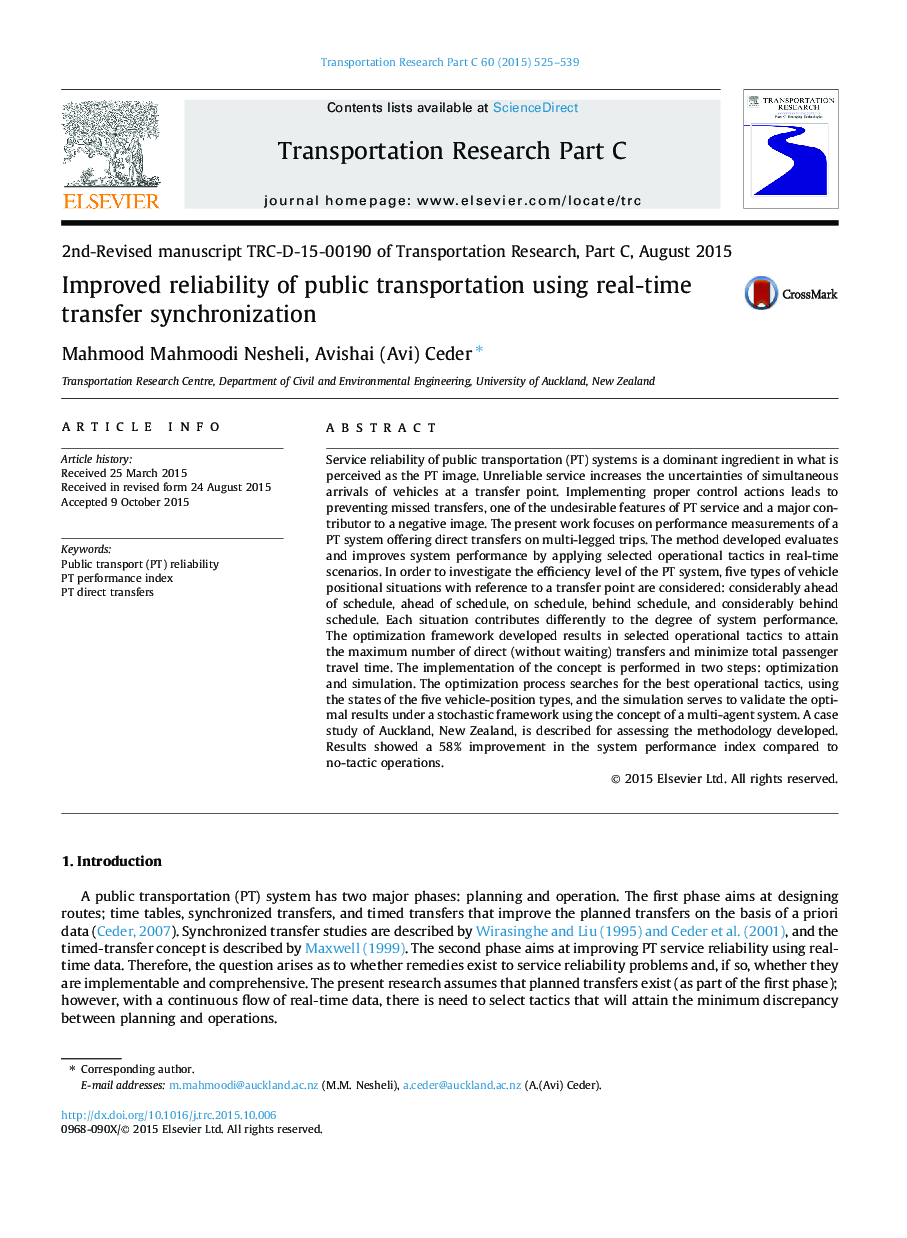| Article ID | Journal | Published Year | Pages | File Type |
|---|---|---|---|---|
| 6936681 | Transportation Research Part C: Emerging Technologies | 2015 | 15 Pages |
Abstract
Service reliability of public transportation (PT) systems is a dominant ingredient in what is perceived as the PT image. Unreliable service increases the uncertainties of simultaneous arrivals of vehicles at a transfer point. Implementing proper control actions leads to preventing missed transfers, one of the undesirable features of PT service and a major contributor to a negative image. The present work focuses on performance measurements of a PT system offering direct transfers on multi-legged trips. The method developed evaluates and improves system performance by applying selected operational tactics in real-time scenarios. In order to investigate the efficiency level of the PT system, five types of vehicle positional situations with reference to a transfer point are considered: considerably ahead of schedule, ahead of schedule, on schedule, behind schedule, and considerably behind schedule. Each situation contributes differently to the degree of system performance. The optimization framework developed results in selected operational tactics to attain the maximum number of direct (without waiting) transfers and minimize total passenger travel time. The implementation of the concept is performed in two steps: optimization and simulation. The optimization process searches for the best operational tactics, using the states of the five vehicle-position types, and the simulation serves to validate the optimal results under a stochastic framework using the concept of a multi-agent system. A case study of Auckland, New Zealand, is described for assessing the methodology developed. Results showed a 58% improvement in the system performance index compared to no-tactic operations.
Related Topics
Physical Sciences and Engineering
Computer Science
Computer Science Applications
Authors
Mahmood Mahmoodi Nesheli, Avishai (Avi) Ceder,
